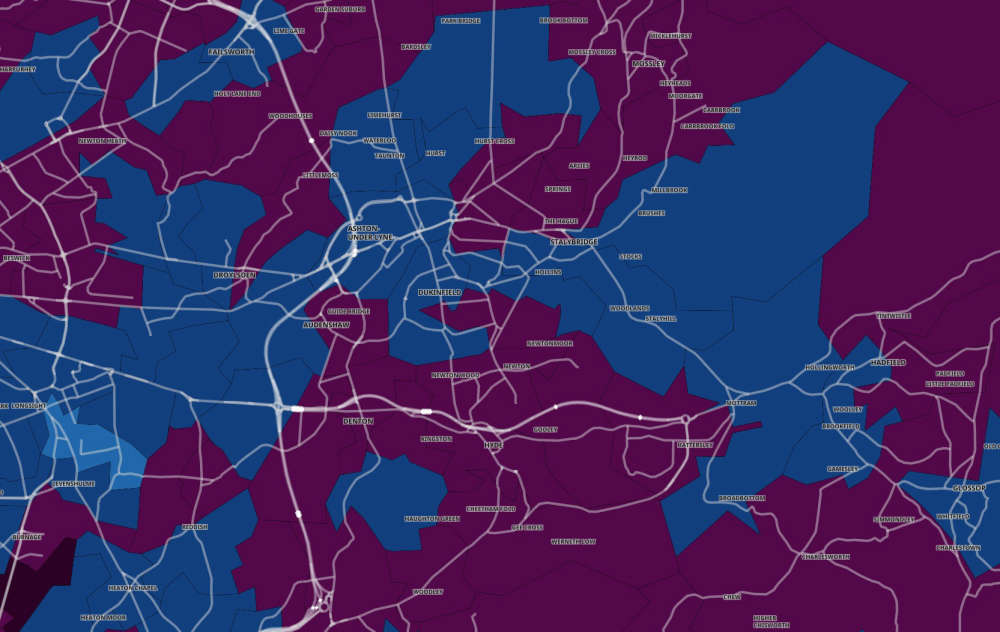
A neighbourhood in Denton is Tameside's biggest Covid-19 'blackspot', the latest public health figures have revealed.
The government has announced the introduction of ‘Plan B’ measures in England to tackle the new Omicron variant of coronavirus.
These include the return of face coverings in shops and certain public venues, including theatres and cinemas.
And from today (Monday, December 13) the guidance is to work from home if you can, with an NHS Covid pass becoming mandatory to get into nightclubs from Wednesday.
As of Sunday, there have been 3,137 confirmed cases of the Omicron variant in the UK, but the true number is estimated to be far higher.
However overall Tameside is at the lower end of the table for its infections in the region, with a rate of 405.1 in the week to December 12.
This is well below the England average of 509.6 cases per 100,000 people.
No Omicron cases have yet been identified in the borough.
The areas with the highest infections can be revealed via an interactive map charting the number of positive Covid-19 test results in neighbourhoods using government data.
It shows the number of infections per local area, broken down into neighbourhoods containing roughly 7,000 people.
The number of new cases is then used to calculate the infection rate per 100,000 people.
In Tameside the biggest ‘blackspot’ is Denton North with a rate of 666.7 and 42 new cases in the week to December 7 – the latest available data.
Second place is Carrbrook and Micklehurst where the 45 cases produce a rate of 622.9.
However in this area there were 20 fewer cases than the previous seven day period.
In third place is Mossley where the local infection rate equals 578.8, with 59 cases recorded.
This is followed by Denton East, where 30 people tested positive for the virus. The infection rate stands at 528.3 per 100,000 residents.
Guide Bridge is next with a rate of 524.7 and 37 new incidences of the virus.
At the other end of the scale, the neighbourhood with the lowest infection rate is Mottram, Hollingworth and Broadbottom, which stands at 238 with just 14 cases recorded.
Here are all the cases recorded across the borough in the week to December 7:
Ashton Central – 30
Ashton East – 30
Ashton North – 16
Ashton Waterloo – 19
Audenshaw – 20
Carrbrook & Micklehurst – 45
Cheetham Fold and Gee Cross – 35
Dane Bank – 27
Denton East – 30
Denton North – 42
Denton South – 32
Denton West – 25
Droylsden Central – 32
Droylsden East – 35
Droylsden West – 20
Dukinfield East and Hough Hill – 16
Dukinfield West – 32
Godley – 33
Guide Bridge – 37
Hattersley – 32
Hurst Cross – 34
Hyde North – 55
Hyde South – 47
Mossley – 59
Mottram, Hollingworth and Broadbottom – 14
Newtonmoor – 32
Smallshaw – 25
Stalybridge East and Swineshaw – 24
Stalybridge North – 25
Stalybridge South – 31
Read more from the Tameside Reporter
Click here for more of the latest news
Click here to read the latest edition of the paper online
Click here to find out where you can pick up a copy of the paper


 Two Tameside OCG members sentenced after cops find 1kg of cocaine in the kitchen
Two Tameside OCG members sentenced after cops find 1kg of cocaine in the kitchen
 GREATER MANCHESTER: Andy Burnham wins third term
GREATER MANCHESTER: Andy Burnham wins third term
 One injured after gas explosion in Dukinfield
One injured after gas explosion in Dukinfield
 WATCH: Shocking hit and run outside Ashton polling station
WATCH: Shocking hit and run outside Ashton polling station

